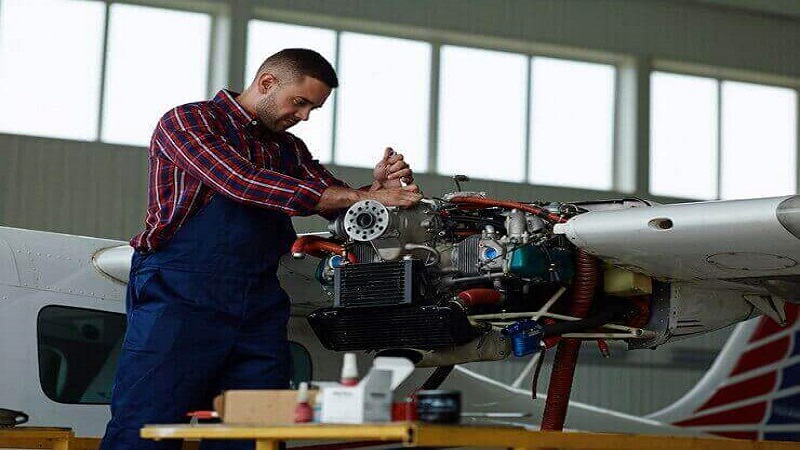Sump pumps are crucial devices in many homes, particularly those prone to flooding or water accumulation in basements. They serve as the first line of defense against water damage, protecting your home from costly repairs and potential health hazards like mold. But like all mechanical devices, sump pumps have a limited lifespan. Knowing when to replace your sump pump is essential to ensure it functions correctly when you need it most. In this article, we’ll explore the factors that affect a sump pump’s lifespan, signs that indicate it might be time for a replacement, and tips for maintaining your sump pump to extend its life.
Understanding the Lifespan of a Sump Pump
The average lifespan of a sump pump is typically between 7 to 10 years. However, this can vary depending on several factors such as the pump’s quality, frequency of use, and the conditions it operates under. High-quality sump pumps, particularly those made from durable materials like cast iron, tend to last longer than cheaper models made from plastic. Additionally, sump pumps that are used frequently or operate under strenuous conditions—such as handling a large volume of water or running for extended periods—may have a shorter lifespan.
Factors That Affect Sump Pump Longevity
Several factors can influence how long your sump pump will last. Understanding these factors can help you make an informed decision about when to replace your pump.
1. Frequency of Use
One of the most significant factors affecting a sump pump’s lifespan is how often it is used. Homes in areas with high water tables or those that experience frequent heavy rainfall may require the sump pump to operate more frequently. This increased usage can lead to more wear and tear on the pump, shortening its lifespan.
2. Type and Quality of the Sump Pump
Not all sump pumps are created equal. Submersible pumps, for example, are generally more durable than pedestal pumps because they are designed to operate underwater and are often constructed from more robust materials. The quality of the materials used in the pump, as well as the brand’s reputation, can also significantly impact how long the pump will last. Investing in a high-quality sump pump may cost more upfront but can save money in the long run by reducing the need for frequent replacements.
3. Installation and Maintenance
Proper installation and regular maintenance are critical to extending the life of your sump pump. If the pump is not installed correctly, it may not function efficiently, leading to premature wear and tear. Regular maintenance, such as cleaning the pump, checking for debris, and testing the float switch, can help identify potential issues before they become serious problems.
4. Environmental Conditions
The environment in which your sump pump operates can also affect its lifespan. Sump pumps in homes with high levels of sediment or debris in the water may experience more frequent clogs, leading to increased strain on the motor. Additionally, pumps that are exposed to extreme temperatures, either hot or cold, may wear out more quickly.
Signs It’s Time to Replace Your Sump Pump
Even with proper maintenance, no sump pump lasts forever. Recognizing the signs that your sump pump is nearing the end of its life can help you avoid a potentially catastrophic failure.
1. Unusual Noises
If your sump pump starts making strange noises, such as grinding, rattling, or whining, it could be a sign that the motor is failing or that internal components are worn out. These noises should not be ignored, as they often indicate that the pump is struggling to operate effectively.
2. Frequent Cycling
A sump pump that frequently turns on and off, even when there is little or no water in the pit, may have a problem with the float switch or the pump itself. This frequent cycling can cause excessive wear on the pump’s motor, leading to a shorter lifespan.
3. Rust or Corrosion
Rust and corrosion can compromise the structural integrity of your sump pump, particularly in models made from metal. If you notice significant rust or corrosion on the pump, it’s likely time for a replacement. Corrosion can also indicate that the pump is leaking or that the pit water is too acidic.
4. Inconsistent Performance
If your sump pump is not consistently removing water from the pit or if it seems to struggle during heavy rainstorms, it may be losing its efficiency. Inconsistent performance is a clear sign that your pump is not functioning as it should and may need to be replaced soon.
5. Age of the Pump
Even if your sump pump seems to be working fine, if it is approaching or has exceeded the 7 to 10-year mark, it may be wise to consider a replacement. Older pumps are more likely to fail, and replacing them before they do can provide peace of mind, especially during the rainy season.
Extending the Life of Your Sump Pump
While it’s inevitable that your sump pump will eventually need to be replaced, there are steps you can take to extend its life and ensure it operates efficiently for as long as possible.
1. Regular Maintenance
Routine maintenance is essential to keeping your sump pump in good working order. This includes regularly cleaning the pump, checking for debris that could clog the intake, and testing the float switch to ensure it moves freely. It’s also a good idea to periodically run the pump to make sure it starts and stops correctly.
2. Backup Power Source
Power outages often coincide with severe weather, which is when you need your sump pump the most. Installing a backup power source, such as a battery backup or a generator, can ensure your pump continues to operate even during a power failure, reducing the strain on the pump when the power is restored.
3. Upgrade When Necessary
If your sump pump is frequently overwhelmed during heavy rainstorms or if it struggles to keep up with water accumulation, consider upgrading to a more powerful model. A more robust pump may handle the workload better, reducing the chances of failure and extending the overall life of the system.
4. Keep the Pit Clean
Debris in the sump pit can clog the pump and cause it to work harder than necessary. Regularly checking and cleaning the pit can help prevent clogs and ensure the pump operates efficiently. Installing a lid over the sump pit can also help keep debris out.
Conclusion
A sump pump is a vital component of any home that is prone to water issues. While the average sump pump can last between 7 to 10 years, various factors such as usage frequency, pump quality, and environmental conditions can affect its lifespan. By understanding these factors and recognizing the signs of a failing pump, you can ensure your sump pump is replaced before it fails, protecting your home from water damage. Regular maintenance and taking proactive measures to extend the pump’s life can also save you time, money, and stress in the long run.

